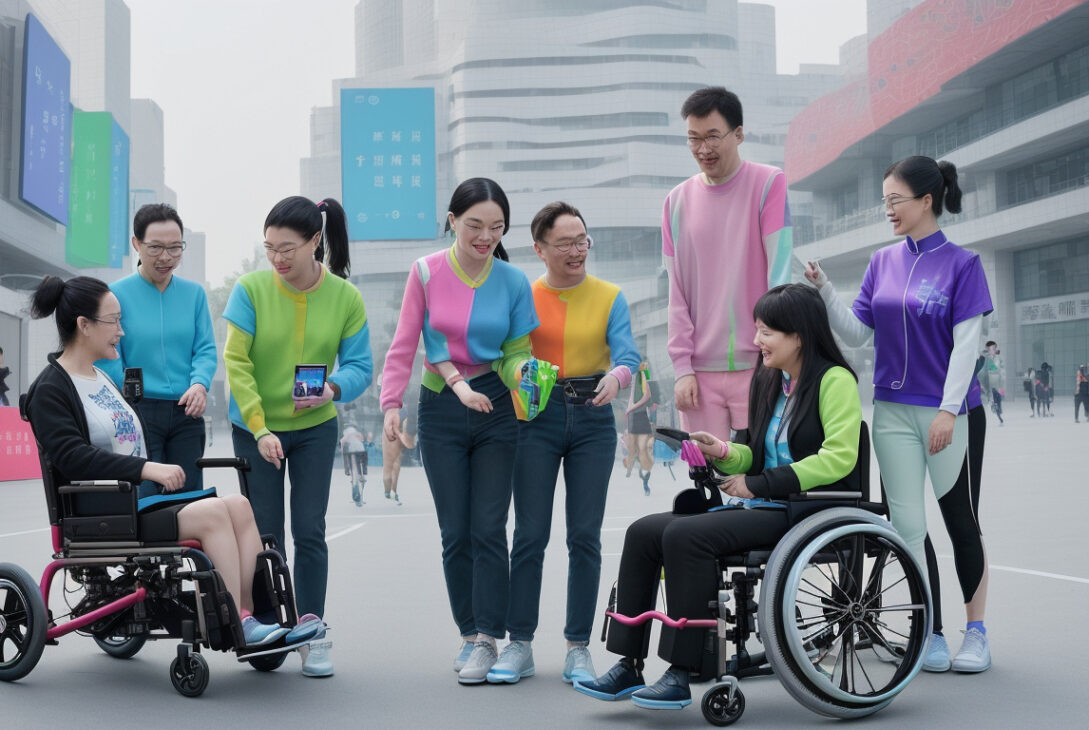China Harnesses Technology to Enhance Lives of People with Disabilities
August 25, 2025 – CGTN
On August 25, China marked its ninth National Disability Prevention Day, reflecting on ongoing efforts to improve the quality of life for people with disabilities through innovative technologies. In recent years, technological advancements have played an increasingly pivotal role in empowering individuals with disabilities, fostering greater accessibility and independence across the country.
Accessible Cultural Experiences
A significant milestone this year was the launch of accessible broadcasts during the 2025 CMG Spring Festival Gala. For the first time, these broadcasts were tailored to serve both visually and hearing-impaired audiences, allowing wider participation in one of China’s most celebrated cultural events. The hearing-impaired version utilized augmented reality (AR) virtual technology to enhance understanding, while the visually impaired version incorporated advanced audio creation, large-format Braille, and tactile graphics displays. These measures embody the inclusive spirit powering China’s drive to break down barriers in cultural engagement.
Scientific Innovations in Rehabilitation
China continues to leverage cutting-edge technology to provide practical aid and rehabilitation for people with disabilities. The Disabled Persons’ Federation recently spotlighted numerous innovations already in widespread use:
-
AI-Assisted Exoskeleton Robots: Developed by researchers at Beihang University, these robotic exoskeletons facilitate lower-limb mobility for individuals with disabilities by interpreting user movement intentions and dynamically adjusting walking patterns. Hundreds of hospitals nationwide have adopted this technology to support rehabilitation. Notably, during the Beijing 2022 Paralympic Winter Games, a torchbearer famously used an exoskeleton to walk upright while carrying the torch.
-
Brain Circuit Pacemakers: A team at Changping Laboratory developed a pioneering brain circuit pacemaker that integrates real-time precision visual navigation with 3D facial recognition. This device targets specific brain functions to assist with conditions such as autism, cerebral palsy, Parkinson’s disease, stroke-related paralysis, and speech disorders, offering new therapeutic possibilities.
-
Bionic Prosthetic Hands and Guide Robots: Other advancements include sophisticated prosthetic limbs and robotic guides that help improve daily living and mobility.
Advancing Accessibility Infrastructure and Services
China’s commitment to accessibility extends beyond medical technology. The Barrier-Free Environment Construction Law has accelerated upgrades across digital platforms and public infrastructure. Over 3,000 websites and mobile applications have incorporated features like speech recognition and text conversion to enhance usability for disabled users.
Moreover, accessibility in public life has seen promising progress:
- TV programming increasingly includes subtitles and sign language interpretations.
- Accessible navigation services now cover 69 cities nationwide.
- Multiple regions have launched emergency calling platforms tailored to the hearing impaired.
- Smart public transportation systems with accessibility features are being implemented.
An illustrative innovation includes stair-climbing robots deployed in eastern China’s Ganzhou City, assisting individuals with mobility challenges in overcoming architectural barriers.
Looking Forward: The 15th Five-Year Plan and Beyond
During a State Council Information Office press conference on July 22, a representative from the China Disabled Persons’ Federation emphasized ongoing plans to advance the integration of innovative technologies in support of people with disabilities throughout the 15th Five-Year Plan period (2026–2030). Priority areas will include applying artificial intelligence, brain-computer interface technologies, and fostering new assistive technology industries.
The goal remains clear: to deepen understanding of the needs of people with disabilities while accelerating technological innovation to ensure scientific achievements tangibly improve their lives.
China’s integration of technology with social policies represents a comprehensive approach toward empowering people with disabilities, illustrating the nation’s commitment to building a more inclusive society where all citizens can thrive.
Reported by CGTN










